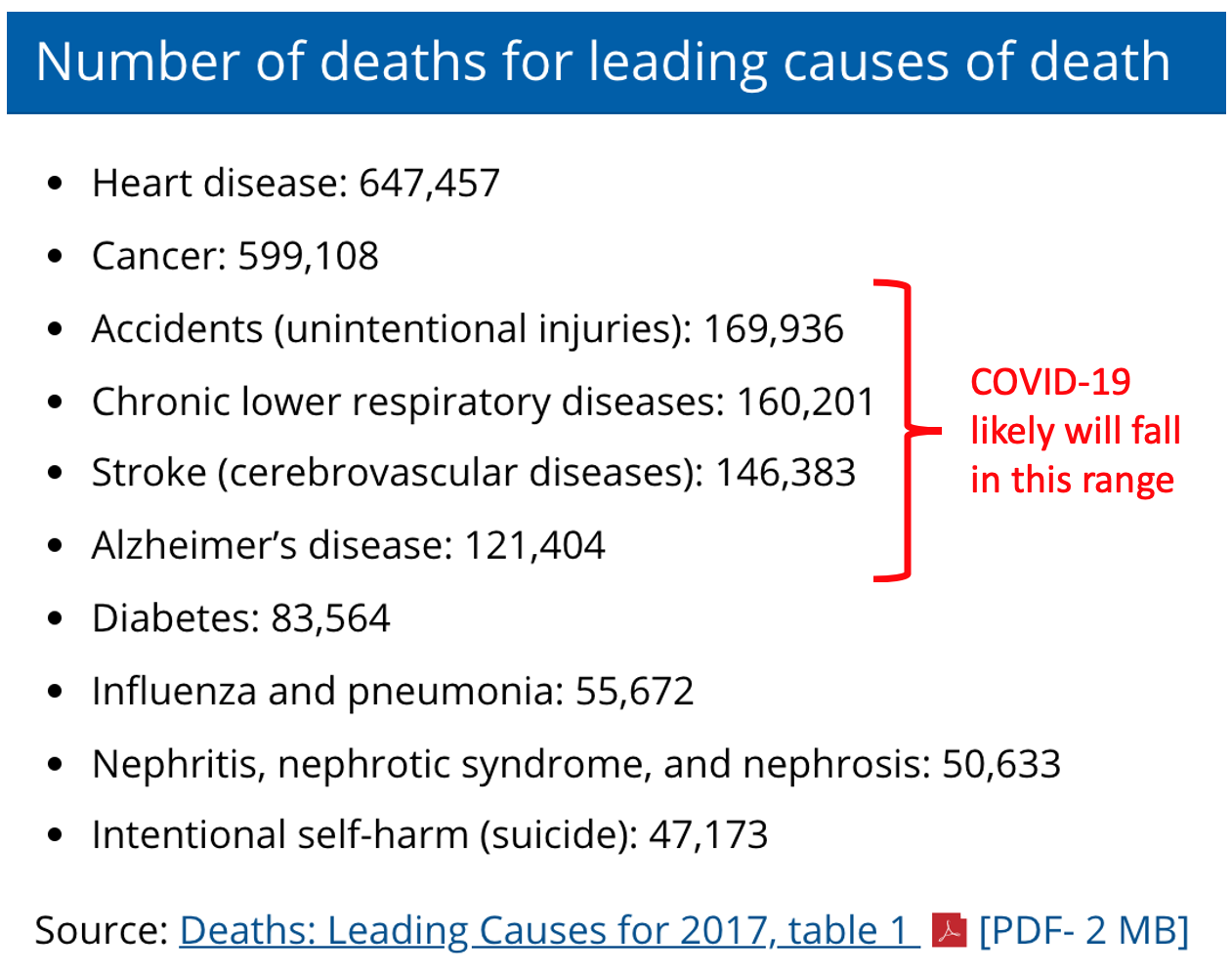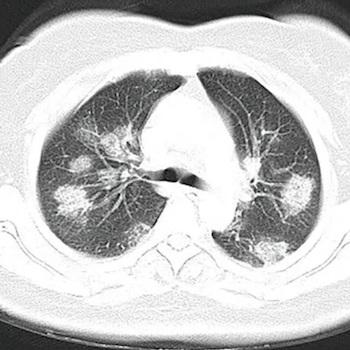The latest news on coronavirus has been mixed.
On the one hand, the antiviral drug remdesivir has demonstrated some efficacy against the coronavirus, reducing recovery time from 15 days to 11 days. That isn't terribly exciting -- my colleague Dr. Josh Bloom compared the drug to Tamiflu -- but, right now, anything helps. This is a small victory.
On the other hand, the prospect of a vaccine becomes dimmer by the day. MIT Technology Review just published an article explaining that immunity to COVID-19 may not be long-lasting. Research shows that humans routinely get reinfected by the coronavirus strains that cause the common cold. According to a preliminary report, "[P]eople frequently got reinfected with the same coronavirus, even in the same year, and sometimes more than once."
The other bad news, of course, is that the death toll in the U.S. keeps climbing. As of today, the number stands at more than 61,000.
COVID-19 Will Be in the Top 10 Causes of Death for 2020
To put that number into perspective, let's examine the top 10 causes of death in the United States. The following chart comes from the CDC and shows data from 2017:

It's difficult to project how many people will die of COVID-19 this year for two reasons. First, there likely will be a "second wave" this fall, but nobody is even thinking that far ahead yet. Second, good models are in short supply. One model from the University of Washington's Institute for Health Metrics and Evaluation (UW IHME) has been the subject of widespread controversy. (It's so bad that some critics said the model should not be used to guide policy whatsoever.) But beggars can't be choosy.
With those caveats in mind, according to the UW IHME model, we should expect 72,433 COVID-19 deaths by August 4, but the death toll could be as high as 114,228. (The precision offered by this model is in itself absurd.) For the sake of argument, and especially since we have no idea how bad the "second wave" will be in the autumn, let's just assume 115,000 COVID-19 deaths in 2020.
As shown above, a death toll of 115,000 is well behind the #1 and #2 causes of death (heart disease and cancer, respectively), but in the same range as causes #3 through #6 (in order: accidents, chronic lower respiratory disease, stroke, and Alzheimer's). Notably, the COVID-19 death toll is roughly twice as high as that of influenza/pneumonia.
A Silver Lining?
A silver lining, if there is one, is that subsequent waves of COVID-19 aren't likely to be as deadly as the first. The reason is because the population was entirely susceptible to the virus during its first wave. Immunity, even if it's partial and short-term, should help protect us when the virus returns.




